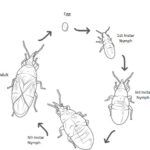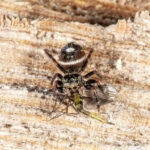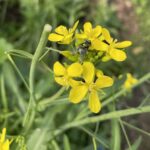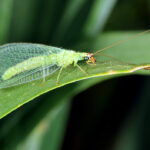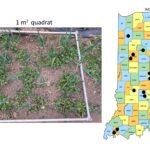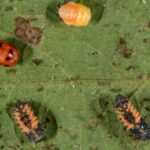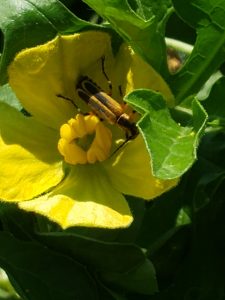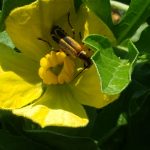Orius insidiosus, also known as the minute pirate bug, is native to North America and a beneficial insect (Figure 1). They are generalist omnivores, feeding on other insects and pollen. Minute pirate bugs belong to the Order of true bugs — Hemiptera — in the family Anthocoridae. Orius insidiosus can be found in a wide range[Read More…]
Beneficial Insects and Mites
I know what you’re thinking: this is an insect spotlight, but you are writing about spiders! They are not insects! Well, you are correct. They are not insects but rather Arachnids. However, they are closely related, studied by Entomologists, and play an important role in arthropod food webs, so bear with us. Hopefully, this article[Read More…]
Blow flies are a group of iridescent green or blue flies belonging to the family Calliphoridae. Flies undergo complete metamorphosis, transitioning through egg-larva(maggot)-pupa-adult. Often in this situation, the larvae and adults occur in different environments and feed on different food sources. In fact, blow fly larvae are carrion feeders, meaning they feed on the decaying[Read More…]
Lacewings are a group of insects commonly found in Indiana and throughout the world. There are several species, but the most common that you will see in Indiana include the green lacewing and the brown lacewing. They belong to a unique order of insects, Neuroptera, and are commonly referred to as aphid lions. The life[Read More…]
Background High tunnels provide a hospitable environment for crops and insect pests, but little is known about the weed community present within them. From 1 December 2022 to 17 March 2023, we visited 14 farms monthly across Indiana and used a quadrat-style approach to measure weed pressure (0% to 100% weed coverage per quadrat) and[Read More…]
The Two-spotted lady beetle, Adalia bipunctata, is a common insect predator, meaning it feeds on other, smaller bugs. Native to North America and Europe, the Two-spotted lady beetle is distinguished from other lady beetles by its oblong shape and two large black spots on either of its back, as well as its large white spots[Read More…]
While in your fields in the last week you may have noticed fewer striped cucumber beetles on the leaves and stems of the growing cucurbit plants (Figure 1). This is because there are two generations of this pest in Indiana; the 1st generation adults that overwintered in the field have mated and left behind their[Read More…]
Would you like to learn more about biological control and how to use it successfully? New York State Integrated Pest Management biocontrol specialist Amara Dunn has a new blog – “Biocontrol Bytes” (https://blogs.cornell.edu/biocontrolbytes/). Short articles are posted approximately once a month to share information, answer stakeholder questions, and connect readers to other relevant resources. Subscribe[Read More…]
